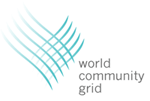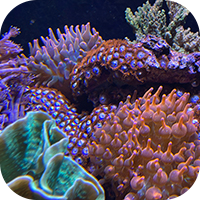OneVoice

Daniel Lubetzky is going to win the Nobel Peace Prize one day. You read it here first. Daniel is the founder of PeaceWorks, a not-only-for-profit business based on the principle that economic interdependence eventually can overcome socio-political turmoil. Basically they get people on opposite sides of a conflict to work together to produce high-end foodstuffs. But that’s only half the story.
The PeaceWorks Foundation — a group I have been working with for a few weeks now — is the non-profit wing of the company. Their main project is OneVoice, a unique grass-roots effort to promote the views of the vast swath of moderate Israelis and Palestinians. The process is fairly simple. Once Israelis and Palestinians are registered to vote with OneVoice (both online and by volunteers on the ground) they are asked to state their opinions on a variety of issues. The referenda are rolled out in phases and contribute to a progressively more honed and unified position statement that will eventually be forwarded as a mandate to global leaders. One interesting point is that, in an effort to promote negotiation, absolute rejection of a proposal is not allowed. You are alloted a limited number of points with which to register your relative level of discord. Use too many on any one issue and you may not have the ability to reject a point later in the vote. The mechanism is a gravitational pull to the center.
There’s a real urgency now with the upcoming Palestinian elections. Daniel and his team are preparing for television coverage, new voting, and a high probability that a supporter of the OneVoice initiative will succeed Arafat. To capture some of this momentum, they’ve created a blog. It’s nascent, but look for it to mature rapidly in the coming week or so.
I’m proud to be a part of this.
Re-MoMA

The Museum of Modern Art in NYC re-opens to the public tomorrow after a two-and-a-half year absence from Manhattan. I’ve been in the new space a few times during construction and last night I was lucky enough to go to the re-opening party. More on that in a second. First, the building. Impressive. There’s a new spaciousness to the galleries that really allows the works of art to exist in meaningful relation to one another rather than simply next to one another. Yoshio Taniguchi has made some great choices with interior windows and portals, teasing visitors (spot Matisse’s Dance ) with snatches of art seen from afar. Perhaps my favorite part of the new architecture are the windows (specially treated to minimize direct sunlight) that look out onto the sculpture garden and the museum’s “architectural neighbors” in Midtown. Upcoming tours available in the museum will actually make a point of commenting on the architecture visible from the windows, an extension of the museum’s architectural holdings — literally a museum outside the walls. I like that concept.
The party was well done. DJ’s on every floor, a band on the top floor, open bar, cafés turned into hip lounges. One can’t complain. No red wine though. “We’re MoMA. We don’t do red wine,” I was told. I wasn’t cool enough to construct a comeback so I can only think he meant they don’t serve red wine because of the staining possibilities. But maybe there’s another story. Like, we’re MoMA and red wine is so The Whitney.
A few photos of the space and event are available.
Hot off the grid(dle)

Today the World Community Grid opened to the public. Basically IBM has developed a distributed computing system (think SETI@Home) for tackling major problems in science and health, all with a humanitarian bent. Coverage in the Times and the Trib.
Rejoice, for now you can satisfy your hitherto unmet desire to crunch human proteome data with your computer’s free processing cycles.
At Zero
I’m part of a team working with the International Freedom Center, one of the four cultural institutions that are part of the World Trade Center redevelopment. Today I visited Ground Zero for the first time. I’d gotten close before, but never felt I was ready or had enough time to be able to reflect on it. The experience was somewhat uplifting, really. There was so much human bustle and vitality orbiting it (and in it at the rebuilt PATH station). Like platelets coagulating over a deep wound.













